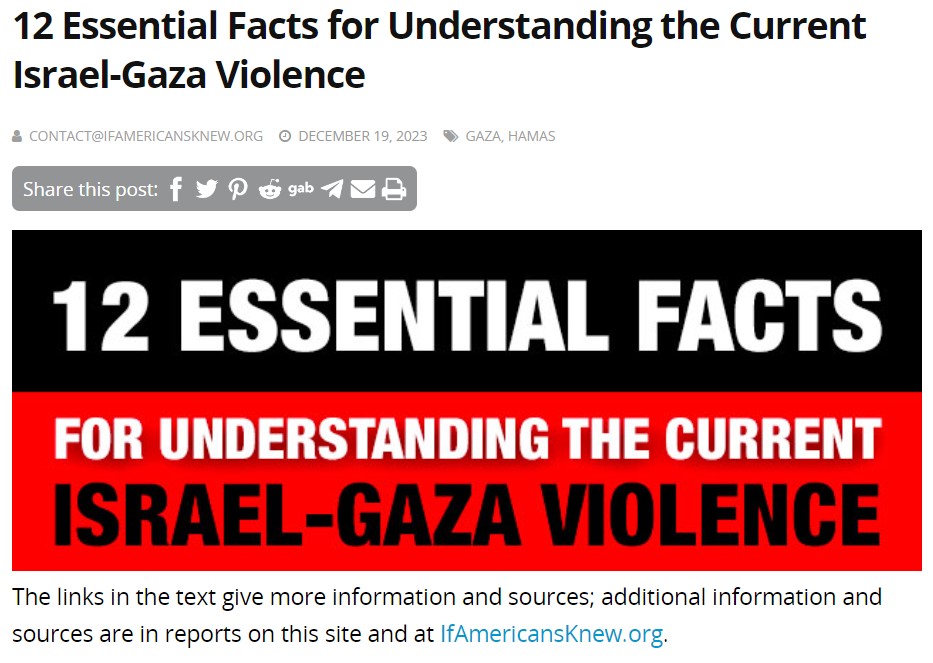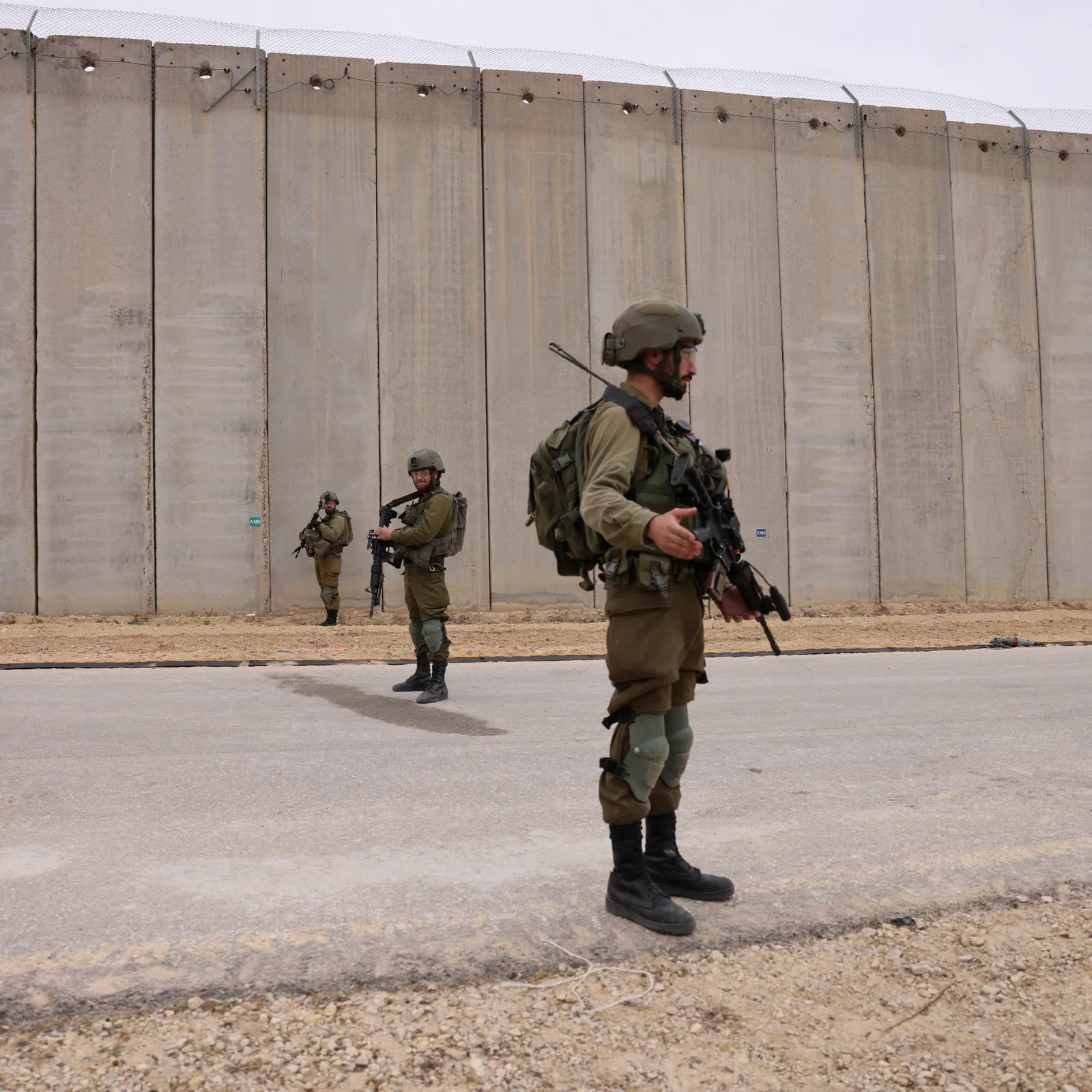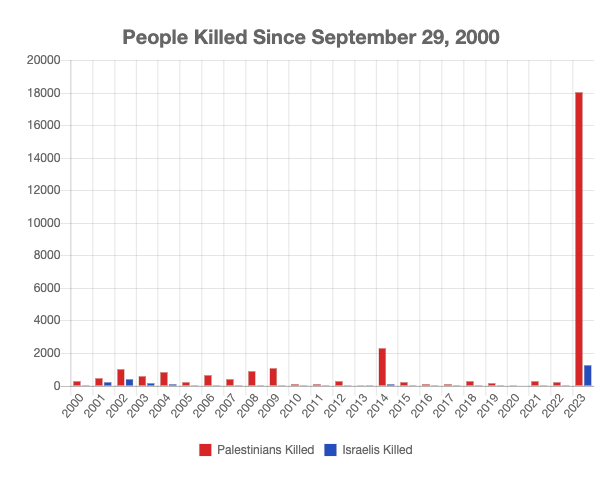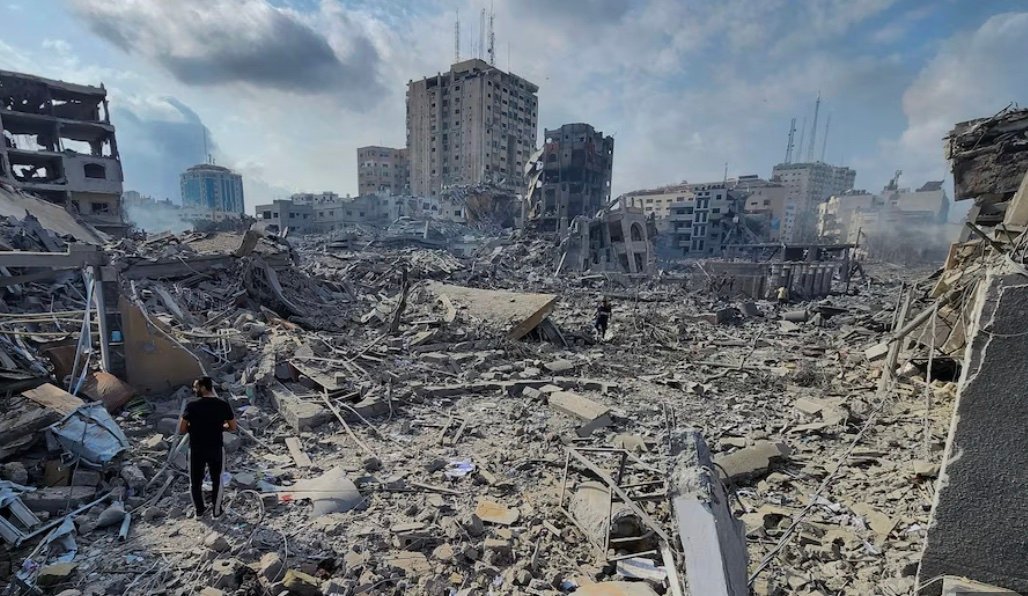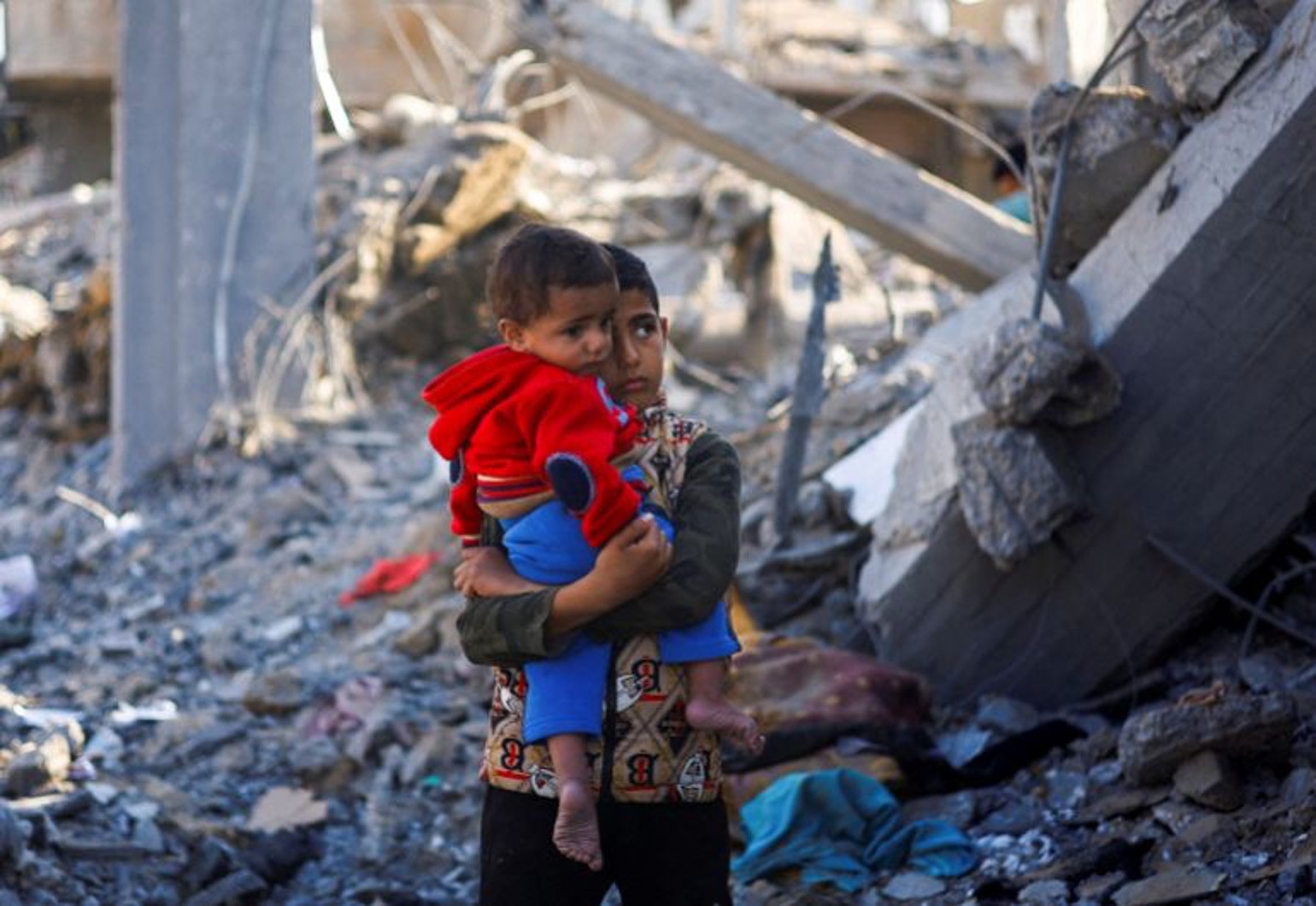12 essential facts for understanding the current Israel-Gaza violence
If Americans Knew – IsraelPalestinetimeline.org: The links in the text give more information and sources; additional information and sources are in reports on this site and at IfAmericansKnew.org.
Click on each fact to reveal supporting details.
- ‣Israel and Gaza are not separate countries. Gaza is a small territory mostly surrounded by Israel and whose borders Israel controls (directly or in the case of one crossing, indirectly).
-
- Gaza is a small territory mostly surrounded by Israel and whose borders Israel controls (directly or in the case of one crossing, indirectly).
- Gaza is part of the shrinking Palestinian lands, along with the West Bank and East Jerusalem, which are under Israeli military occupation. Together, these areas are often referred to as the Occupied Palestinian Territories (OPT).
- Human Rights Watch explains: “While Palestinians have a limited degree of self-rule in parts of the OPT, Israel retains primary control over borders, airspace, the movement of people and goods, security, and the registry of the entire population, which in turn dictates such matters as legal status and eligibility to receive identity cards. A number of Israeli officials have stated clearly their intent to maintain this control in perpetuity and backed it up through their actions.”
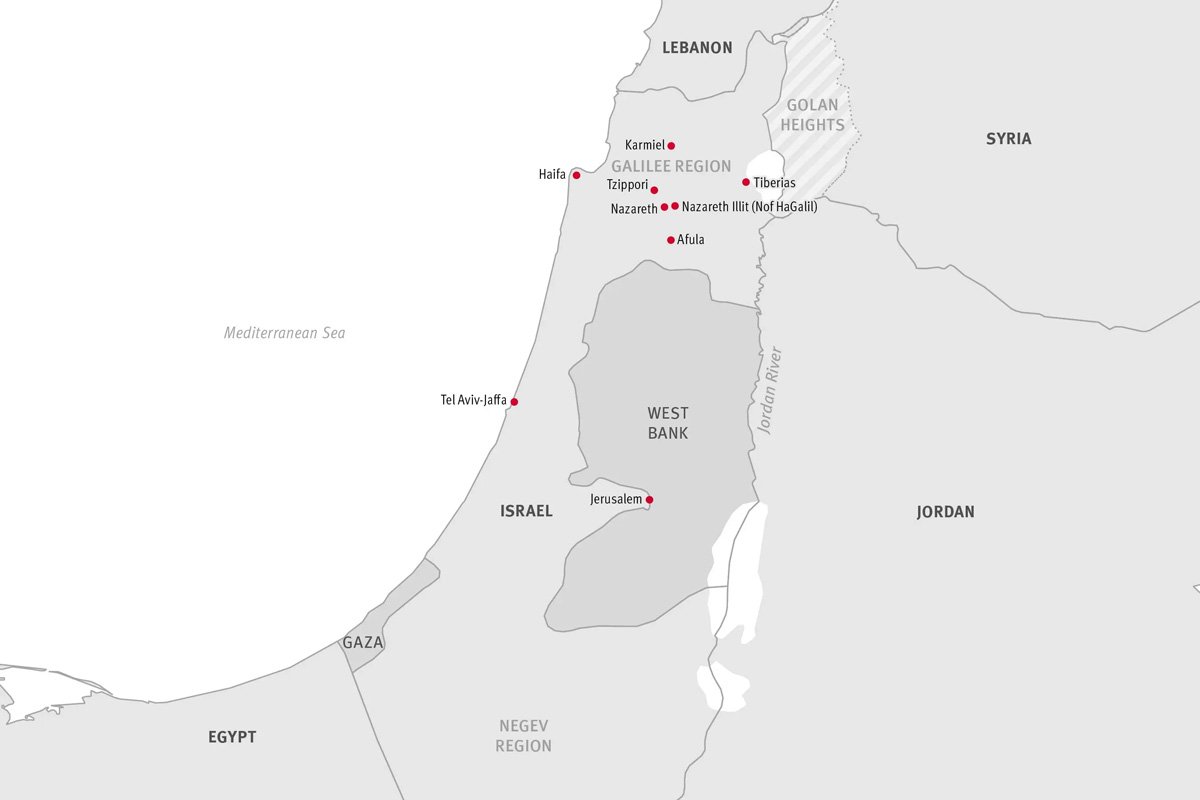
Israel and the Israeli-occupied Palestinian Territory, made up of the West Bank, including East Jerusalem, and the Gaza Strip, as well as the Israeli-occupied Golan Heights ©2021 Human Rights Watch
-
- ‣Gaza is often called an “open-air prison” — for good reason.
-
- Israel built a militarized wall around Gaza, essentially imprisoning its 2.3 million men, women, and children. It’s extremely difficult to get in and out of Gaza; Israel has even prevented children with life-threatening illnesses from leaving for care.
- Israel has blockaded Gaza for over 16 years, often preventing essential items from getting into the area, including food and medications, causing growth stunting in children and escalating poverty.
Israeli soldiers stand on guard by the fence along the Gaza Strip near Moshav Netiv HaAsara in southern Israel [Menahem Kahana/AFP]
-
- ‣Muslim, Christian, and Jewish Palestinian Arabs peacefully shared the land before Israel was created in 1948.
-
- Before the movement to create Israel, the inhabitants of the area were approximately 80% Muslim, 15% Christian and 5% Jewish.
- These Palestinians of different faiths lived together without violence.
- The land was known as Palestine, though it was not a modern state, and was first under the Ottoman Empire and then briefly under British colonial control.
- In the late 1800s a secular movement began in Europe to create a Jewish state. The movement, called Zionism by its founders, encouraged Jewish Europeans and Americans to move to Palestine to start a new country, but only a small minority joined this movement. Most Jews in the region opposed it, and religious Jews generally considered it heretical.
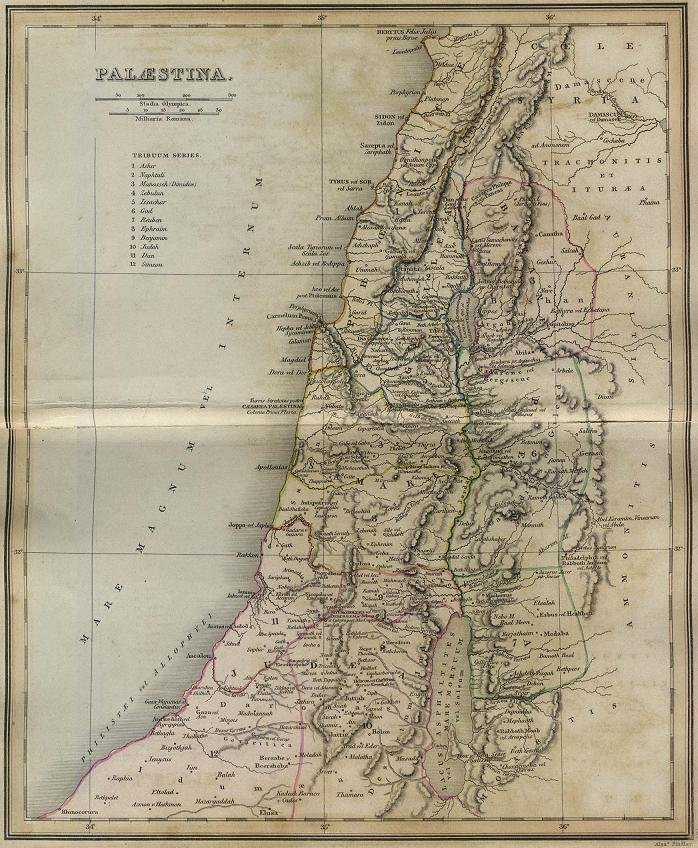
-
- ‣Israel was founded in 1948 by forcing non-Jewish Palestinians off the land.
-
- There are still Palestinians alive today who were forced out of the new state.
- Some 70-80 percent of Gazans are from families violently forced out in the founding of Israel.
- Zionist leaders lobbied Britain, the U.S., and member states of the United Nations to support the creation of a new state of Israel (but this was not passed by the Security Council and did not create Israel).
- The new state was set up in 1948, when Zionist/Israeli military groups forced 750,000 non-Jewish Palestinians from their land, confiscating their homes.
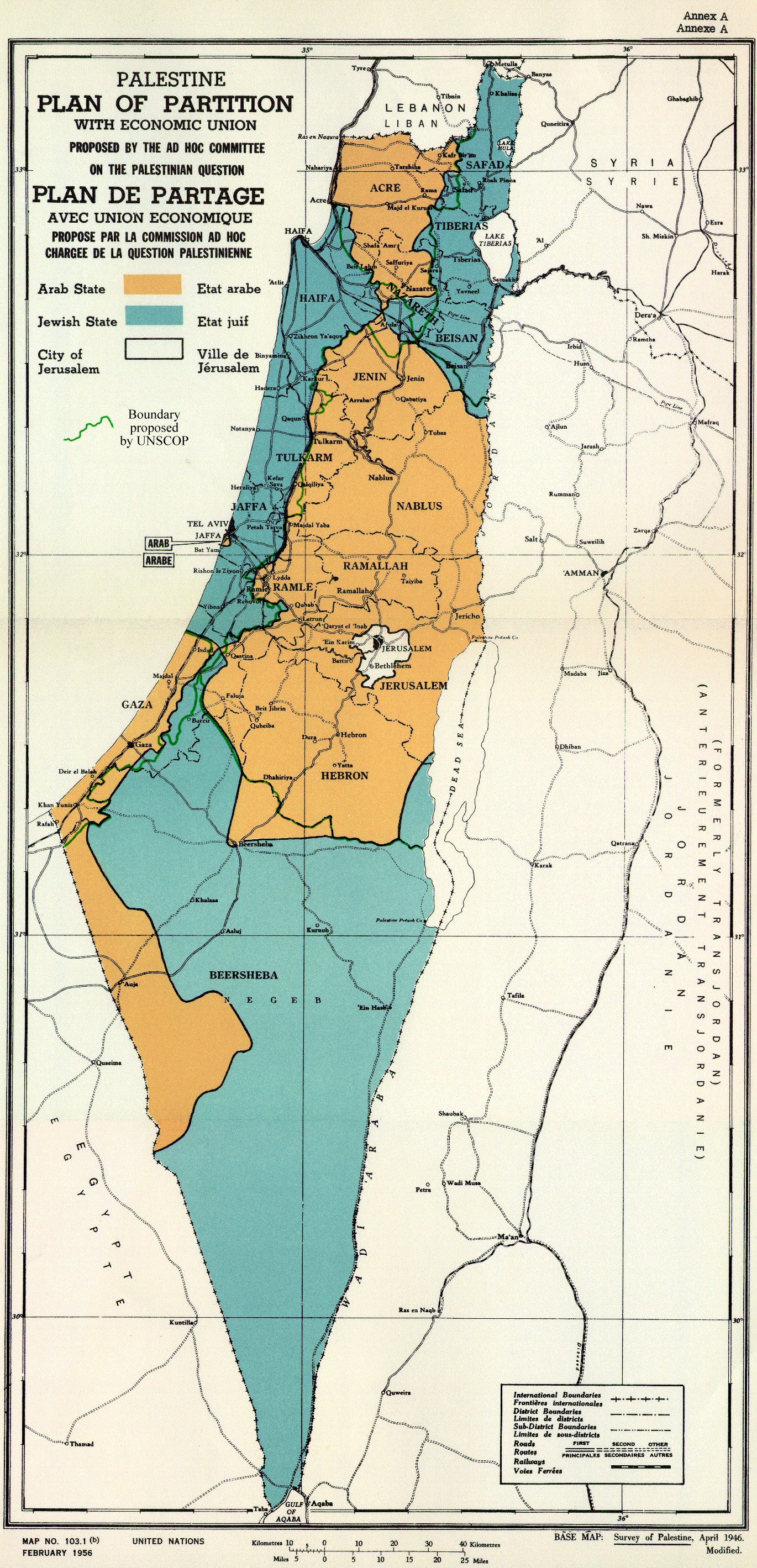
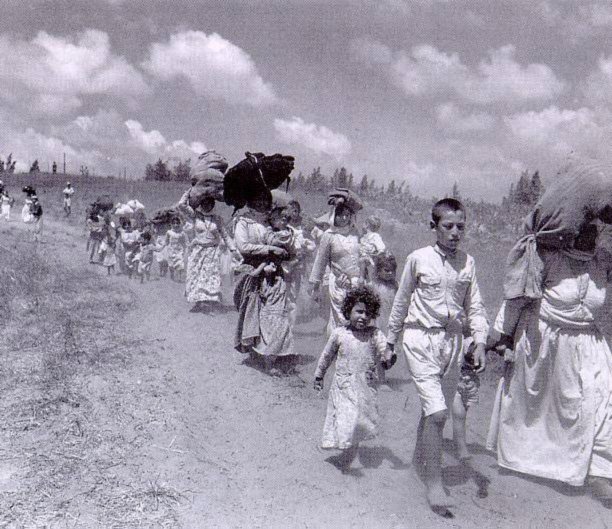
Palestinian refugees leaving a village near Haifa, June 1948.
-
- ‣Israel has been taking over more Palestinian land ever since…
-
- The refugees from Israel’s founding war retreated to camps in the remaining portion of the land, which became the Palestinian territories, or neighboring countries. A portion remained within what is now Israel as second class citizens.
- Israel took over more land in 1967 and set up a military occupation in the remaining Palestinian territories. (At this time, Israeli forces tried to sink a U.S. Navy ship monitoring the violence, killing 34 Americans and injuring 174. An independent commission concluded Israel had perpetrated an act of war against the U.S..)
- Israeli settlers have been taking over more land ever since, creating new towns and roads in the West Bank that are off-limits to Palestinians.
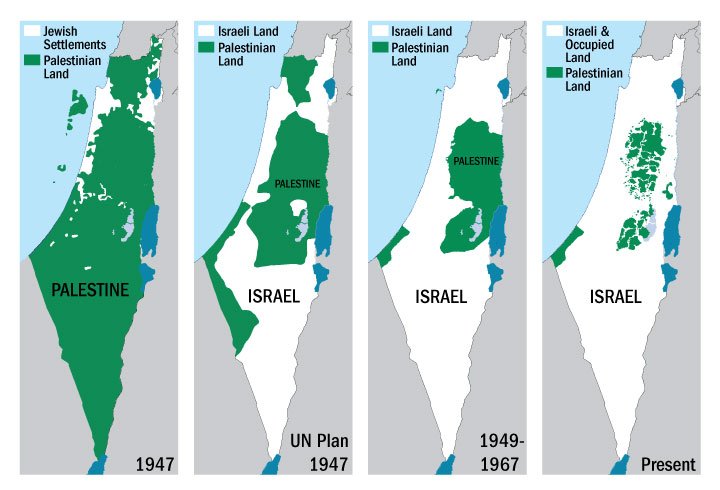
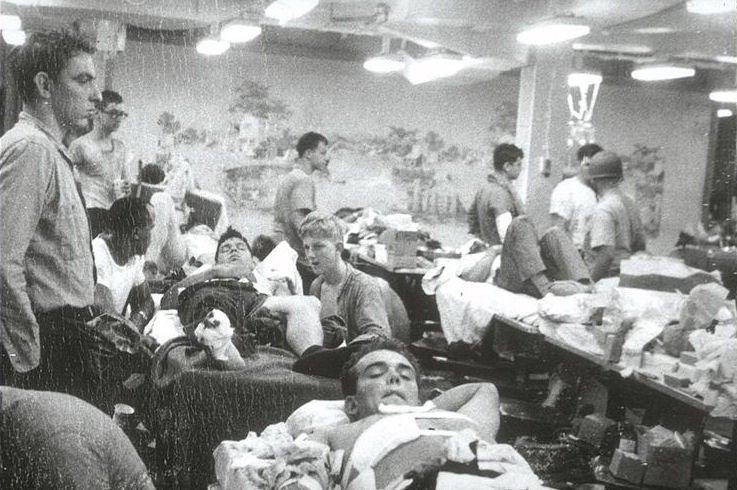
USS Liberty crew wounded during Israeli attack that killed 34 and injured 174.
-
- ‣The two “sides” are not evenly matched.
-
- Israel exerts control over all Palestinian land — either directly, through its military occupation in the West Bank, or indirectly, through its control of Gaza’s borders.
- Israel has one of the most powerful militaries in the world, including nuclear weapons, supported by massive funding from the U.S. and other states.
- Israel is an affluent, modernized country, while the Palestinian lands, which contain many highly educated, technologically advanced individuals, suffer under poverty, blockades, and a constant need to rebuild after Israeli attacks.
-
- ‣Palestinians are killed at massively higher rates than Israelis, and this has always been true.
-
- While every death is tragic, Israeli forces have killed vastly more Palestinians in every stage of the “conflict” than Palestinians have killed Israelis. The majority of the Palestinian victims are civilians, including numerous women and children.
- Western media and politicians tend to present violence between Israeli forces and Palestinians as initiated by Palestinian attacks that spark Israeli retaliation. Studies of the facts show the opposite.
Chart showing deaths on both sides as of December 11, 2023 (source: IsraelPalestineNews.org)
-
- ‣Palestinians in Gaza and the West Bank have often tried nonviolent resistance.
-
- The vast majority of Palestinians have no weapons. They continually have called out to the international community to uphold universal human rights.
- In 2018 thousands of families in Gaza gathered every week for over a year and a half in unarmed, Gandhian style demonstrations. Israeli snipers shot one after another, and the world was silent.
- This was just the latest of decades of nonviolent Palestinian demonstrations against Israeli theft of their property, many of them in small villages.
-
- ‣Numerous respected organizations have documented Israel’s systemic human rights abuses and violations of international law.
-
- Israel has a policy going back decades of breaking the arms and legs of protestors with rocks.
- The homes of Palestinians can be taken over at any time by the Israeli military. The occupants are locked in one area while their home is used as a temporary military base.
- Israeli soldiers regularly go into Palestinian cities and villages and take Palestinian prisoners. Thousands of Palestinians, including children are held by Israel at any given time, often without ever being charged with a crime.
- Torture of Palestinian adults and children in Israeli prisons and by Israeli forces, including sexual assaults, have been documented for years. (For example, see this report on sexual torture of Palestinian men by Israeli authorities and this report about an Israeli interrogator sexually assaulting a Palestinian child.)
- Israel regularly demolishes Palestinian homes.
- NGOs documenting these: Human Rights Watch, Red Cross, Amnesty International, Israel’s B’Tselem, Christian Aid, Foreign Service Journal, Defense for Children-Palestine, Save the Children, numerous UN agencies, Al Haq, Israel’s Breaking the Silence, Israeli Committee Against Home Demolitions, and more
During the first ‘intifada’ (uprising,) Israeli soldiers were instructed to break the bones of Palestinian protesters.
-
- ‣Israel relies on funding and diplomatic cover from the U.S. and other states.
-
- The U.S. sends at least $10 million per day to Israel, as well as weapons and technology, and expends another $10 million per day on projects that benefit Israel, largely due to a multi-billion-dollar special interest lobby on behalf of Israel.
- The U.S. routinely vetoes resolutions in the United Nations that would condemn Israeli atrocities, and pressures other states to further Israeli state goals and isolate Palestinians.
- For decades, U.S. experts have said that U.S. support for Israel is damaging to the United States. In the 1940s and earlier, experts in the Pentagon, State Department, and intelligence agencies recommended against supporting the pro-Israel movement.
-
- ‣On October 7, 2023 up to 1,000 Palestinians broke out of Gaza, took hostages, and attacked Israeli soldiers and civilians near Gaza.
-
- Using rockets and hang gliders, motorcycles, and pickup trucks to cross into Israel, Palestinian fighters attacked Israeli communities near Gaza, killing and kidnapping Israeli soldiers and civilians.
- Israeli sources initially claimed that the fighters had killed 1400 people, including 40 babies. Now they report that the death toll was actually 695 Israeli civilians, including about 13 Israeli children under the age of 10, one an infant, as well as 373 security forces and 71 foreigners, giving a total of 1,139. It has also come to light that some of the Israelis – soldiers, civilians and children – were killed by Israeli forces.
-
- Palestinian fighters are presumed to have killed the majority; Israeli eyewitnesses and officials say that some subset of victims were killed by Israeli forces responding to the attacks.
- The fighters took hostage more than 200 soldiers and civilians in Israel, including Israelis and non-Israelis, 30 children, and seniors, babies, and seniors. Hamas aimed to free some of the 5,200 Palestinian prisoners in Israeli custody, which included 170 children and of whom 1,264 had never been charged with any crime, even stone-throwing.
- Israel has disseminated unverified atrocity stories about the attack, many of them found to be without evidence, for example, the falsehood that 40 babies had been beheaded. Many of these claims continue to circulate despite being shown to be inaccurate or unsupported by the available evidence.
- Already released Israeli hostages and the families of hostages still being held are reported to be angry with the Israeli government for not prioritizing negotiations to ensure their return to their families. Some of the hostages have reportedly been killed by friendly fire and Israeli airstrikes.
International journalists were shown around part of Al-Shifa hospital by IDF spokesperson Lt Col Jonathan Conricus. The CBS News correspondent found the evidence for a Hamas control center “underwhelming”; the BBC found it to be full of fabrications.
-
- ‣Israel immediately began indiscriminately shelling Gaza, killing and maiming men, women, and children of all ages.
-
- In the first two months, Israeli forces killed over 17,000 people in Gaza, including 7,870 children and infants. (Thousands are reportedly still missing, mostly under the rubble.) The New York Times reports that in less than two months, twice as many women and children in Gaza had been killed than in Ukraine after two years of war.
- Israel cut off electricity to Gaza and has allowed minimal food and other supplies to enter. Periodically it has cut off internet and telecommunications access.
- During the first two weeks, Israel dropped more than 25,000 tons of explosives on the Gaza Strip, equivalent to two nuclear bombs.
- The attacks have destroyed and damaged large parts of Gaza. Homes, schools, hospitals, entire universities, churches, and mosques have all sustained major damage and been destroyed. The BBC reports that satellite imagery shows that more than 98,000 buildings – sometimes entire neighborhoods – have been damaged or destroyed.
- During the first two months, Israel ordered some 1.9 million people to evacuate their homes and move to small zones in Gaza designated as safe areas with little to no food, water, or even toilets. Israeli forces have shot at Palestinians walking along designated evacuation routes, as well as shelling designated “safe areas” where civilians had been told to relocate.
- UNICEF and other agencies have decried the escalating humanitarian catastrophe.
Under Israel’s bombardment, over 43,000 housing units in Gaza have been destroyed, according to OCHA
A Palestinian boy carrying a baby stands at a site of Israeli strikes in Rafah, in the southern Gaza Strip
-

